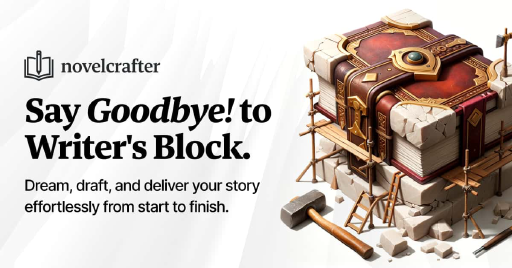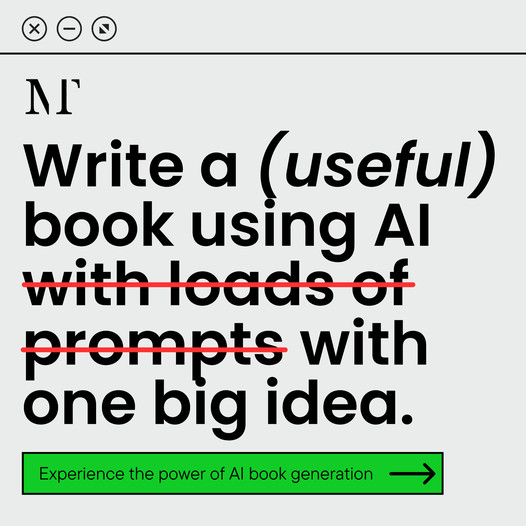Mastering the Art of Tension in Writing
Tension keeps readers hooked, eyes glued to the page, breath held in suspense. Nailing the creation and growth of tension can take your storytelling to a whole new level.
Why Tension Matters in Your Stories
Tension is like the battery that powers your narrative. It stirs curiosity, amps up emotions, and shoves the story along its path. Get your readers caught in tension’s web and they’ll be flipping pages faster than you can say “plot twist”. Here’s how tension does its magic:
| Purpose of Tension | Description |
|---|---|
| Engagement | Plants a magnetic pull on the readers, keeping them zeroed in. |
| Conflict | Fires up the drama, spurring characters to grow and change. |
| Pacing | Dictates the speed and rhythm, causing the highs and lows that keep the story lively. |
| Resolution | Climbs to nail-biting moments and satisfying endings. |
If you get a handle on weaving tension into your tales, your storytelling will shine, offering readers an experience they won’t forget.
The Flavors of Tension in Writing
Writers have a toolkit full of tension types to make readers squirm in delightful anticipation. Knowing your flavors helps you decide which to sprinkle into your work.
| Type of Tension | Description |
|---|---|
| Physical Tension | Features threats or hurdles in the physical world, making hearts race. |
| Emotional Tension | Plants seeds of turmoil within character relationships and emotional chaos, pulling readers into the character’s mind. |
| Situational Tension | Springs from sticky situations characters land in, often leaving them tangled in problems. |
| Moral Tension | Challenges characters with tough moral decisions, prompting readers to ponder deep issues. |
Start mixing these tension types and your stories will bristle with life. Throw in a combo of these and your narrative will layer itself naturally. For hot tips, peek at how to improve writing skills or swing by our advice on writing a novel.
Setting the Stage: Stirring Up Trouble Right from the Start
Kickstarting a tale with a dash of conflict snags readers’ attention quicker than a roadside circus. This part dives into the art of setting the stage for some good ol’ storytelling drama. Get your readers knee-deep in curiosity from the get-go.
Kicking Off Conflict on Page One
Conflict is the secret sauce to any good story. Nail that first paragraph by throwing your main character into a mess of trouble. Whether it’s a dilemma brewing inside, a face-off with an evil villain, or some trickster buddy causing chaos, there’s gotta be something brewing. You want your reader thinking, “How’s this gonna pan out?”
Here’s some conflict flavors to stir things up at the start:
| Trouble Type | What’s Going On |
|---|---|
| Inner Turmoil | Personal demons like fear or second-guessing |
| Outside Forces | Fistfights with foes or Mother Nature’s wrath |
| People Problems | Spicy drama between buddies or lovers |
Get that relatable conflict out there, and boom—your reader’s hooked and emotionally invested.
Grabbing Your Readers by the Eyeballs
Those first few lines need some serious pizzazz. Throw in a sentence that dares them not to read on. Make ‘em lean in, whether by a bit of mystery or dropping them right into the action. Here’s how to nail it:
 What Poetry Feels Like
What Poetry Feels Like- Paint a Picture: Use words to paint a scene drenched in conflict or feelings, pulling readers right in.
- Ask Juicy Questions: Pose questions that gnaw at curiosity since readers love a good mystery.
- Dial Up the Feels: Hit them with some strong feelings right away to forge a deeper bond. This sets the mood for the whole shebang.
Try different tricks from our guide on upping your writing game to find what clicks for you. Starting with sparks of conflict and catching readers’ interest lays the groundwork for the story’s tension. If you’re hunting for more storytelling ideas, swing by our novel-writing tips.
Building Tension Throughout Your Narrative
Tension—it’s the secret sauce to keep folks glued to your story. Let’s dive into whipping up emotional stakes and sprinkling in some clever foreshadowing and suspense to keep your readers guessing.
Increasing Emotional Stakes
Get your readers emotionally all tangled up with your story. When they start to care—like, really care—about what happens to your characters, the tension cranks up automatically. Here are some ways to get those stakes sky-high:
- Develop Relatable Characters: Draw up characters with straightforward dreams, worries, and weaknesses that make readers nod in agreement.
- Throw ‘Em Into High-Pressure Situations: Put your characters on the spot—they’ve got to face the music with some serious consequences. Make sure the fallout matters to them, their pals, or even bigger than their individual bubble.
- Set Time Bombs: Toss in some tight deadlines or creeping dangers to spur your characters into action. Give ’em scenarios that shake things up with tricky snap decisions.
| Strategy | Description |
|---|---|
| Relatable Characters | Folks get attached by understanding their life’s driving forces and fears. |
| High-Pressure Situations | Big consequences force everyone to sit up and take notice. |
| Time Bombs | Urgency kicks them into high gear, making everything feel crucial. |
Using these moves, you’ve got readers hooked, ready to plunge deeper into the twists and turns of your plot.
Using Foreshadowing and Suspense
Foreshadowing and suspense are like the dynamic duo for tingling tension. They’re the tricks to lure your readers along for the ride.
-
Foreshadowing: Drop little clues about what’s brewing or set to explode later. Weave these breadcrumbs into what characters say, how they act, or the world around them. The trick? Keep ’em subtle and mysterious, not beating folks over the head with it.
-
Suspense: It’s all about making ’em guess what’s coming next. Use pacing—slow things to a crawl at heart-thumping moments or leave ’em hanging at the end of chapters.
| Technique | Purpose |
|---|---|
| Foreshadowing | Teases future surprises to keep curiosity simmering. |
| Suspense | Dangles predictions to ensure nobody’s clocking out from your tale. |
Blending in foreshadowing and suspense, your story turns into a page-turner, where readers are dying to crack the mystery you’ve cooked up. For extra spool-up on characters that crank tension, check our piece on developing story characters. Make these techniques your go-to and watch your audience fall under the spell of your storytelling wizardry.
Developing Complex Characters to Heighten Tension
Raise the drama in your tales by crafting characters brimming with depth and personality. Their one-of-a-kind relationships keep readers gripped from start to finish.
Creating Multifaceted Characters
To win over your audience, your characters need to jump off the page with life and relatability. A character that grabs our attention usually has these traits:
| Trait | What It Means |
|---|---|
| Goals | Clearly defined aims that shape their actions. |
| Flaws | Human traits that add layers to their persona. |
| Backstory | Rich history that shapes their motives. |
| Relationships | Connections with others that spark conflict or camaraderie. |
A mixed bag of strengths and weaknesses makes characters interesting and relatable. When readers see these characters stumble, they can draw parallels with their own lives. Want to dig deeper? Head over to how to develop characters in a story for more tips.
Character Dynamics and Conflicts
The juicy bits lie in the clashes between characters. The chemistry or friction they share can have many flavors:
| Dynamic Type | What’s Happening |
|---|---|
| Allies | Partners in crime dealing with the outside world’s woes. |
| Rivals | Fiercely compete with differing agendas. |
| Mentorship | Growth-driven bond through advice and challenges. |
| Love Interests | Romantic spice that tangles relationships further. |
These interactions set the stage for drama, be it a secret revealed or a surprising new league. These relationships build captivating story arcs. Adding internal battles alongside outward struggles gives your tale that punch. Try writing prompts for beginners to experiment with character bonds.
As your characters navigate ups and downs, the suspense keeps your readers yanking at the pages like it’s the latest bestseller.
Crafting Climactic Moments for Maximum Bang
You want your story to be unforgettable, right? Creating those peak moments is where the magic happens, turning your narrative into a gripping masterpiece. This section gives you the scoop on how to shape up to that big moment and why it’s key for your readers to feel the payoff.
Building Up to the Biggie
Getting your readers hyped as the climax approaches takes some finesse. Writers have a toolbox of tricks to set up that heart-thumping anticipation. Check out these handy techniques:
| Trick | What It Does |
|---|---|
| Pacing | Keep the story’s rhythm just right to keep eyes glued. |
| Escalating Trouble | Throw bigger obstacles in your character’s way. |
| Sneaky Reveals | Drop truth bombs that shake up the storyline. |
| Emotional Connection | Make readers feel like they’re in the characters’ shoes. |
| Nail-biting Endings | Leave them hanging at chapter ends—it’s addictive! |
These tricks in your storyteller’s hat can craft a killer climax. They keep your audience hooked, wanting to know just how everything knots up.
The Big Finish
So you’ve got them on the edge of their seats. Now, that climax? It’s gotta pay off. Wrap things up so it feels right, like the bow on a gift. Here’s what to think about when wrapping up your story:
| What to Nail | Why It Matters |
|---|---|
| Character Change | Have characters show their growth—it’s satisfying. |
| Wrap It Up | Tie loose ends into a neat bow. |
| Themes Come Full Circle | Bring back those big ideas you’ve been sprinkling in there. |
| Emotional Satisfaction | Let readers feel the feelings—happy, sad, whatever fits. |
As you dream up this climactic moment and how to nail the landing, play around with different storytelling styles. Want to get savvy on character crafting? Peep our piece on how to develop characters in a story and level up your writing chops with how to improve writing skills. With some practice, you’ll write tension-packed stories with climaxes that echo in your reader’s minds long after the last page.
Practicing and Refining Your Tension-Building Skills
Experimenting with Different Techniques
If you want to get better at cranking up the tension in your writing, you gotta try out some new tricks. Mixing things up helps you find what clicks with your style and what fits the story like a glove. Here’s a handful of tricks you might want to give a whirl:
| Technique | Description |
|---|---|
| Foreshadowing | Drop some hints about what might go down later to keep folks on the edge of their seats. Little hints can make readers dying to know what’s coming. |
| Raising Stakes | Pour on the pressure and watch characters squirm. The more they’re up against it, the more readers are caught up in the drama. |
| Pacing Changes | Toy with the tempo. Speed it up when things get hairy or slow it way down to let anticipation marinate. |
| Unreliable Narration | Throw in a narrator who might be pulling your leg. Keep folks guessing and second-guessing. |
| Contradictory Situations | Spin characters into a web where left means right and up is down. This creates more sizzle and keeps emotions stirred up. |
Bring in parts of the storyline and grow your characters while playing around with these techniques. You can dig into character development with our piece on how to develop characters in a story.
Seeking Feedback and Revising Iteratively
Feedback’s your best buddy for polishing up those tension-building muscles. Loop in some fellow ink-slingers or get into a critique circle. Get their take on if your suspense is sizzling right. Here’s how you can scoop up some feedback and polish your prose:
- Select Beta Readers: Pick folks who know storytelling and can shoot straight with their critiques on your stuff.
- Ask Specific Questions: Zero in on spots where the tension kinda fizzles or scenes that had them biting nails. This targeted feedback fine-tunes your drafts.
- Revise with Purpose: With feedback in hand, rework those sections to dial up the suspense. Zoom in on what your readers pointed out.
Taking feedback on board levels up your skills, making sure you nail tension in your narrative. For more nuggets on upping your writing game, see our article on how to improve writing skills.
By keeping the experimentation rolling and tweaking based on what you learn, you’ll shape your signature style for crafting tension that hooks your readers and won’t let go.

 Grab my poetry book, 'we're all just wanderers in the end' Here
Grab my poetry book, 'we're all just wanderers in the end' Here AD: Your Book Finally Written...
AD: Your Book Finally Written...